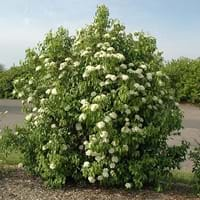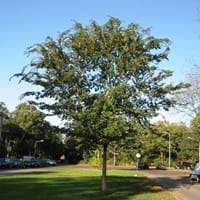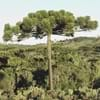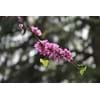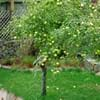Life Span
Perennial
Perennial
Origin
Northeastern United States, Mid-Atlantic United States, Southeastern United States, North-Central United States, Central United States, Canada
Eastern Asia
Types
Arrowwood Viburnum, American Cranberrybush, European Cranberrybush
Ulmus chumlia, Ulmus glabra, Ulmus elongata
Habitat
Rocky areas, Stream side, Woodlands
River side
USDA Hardiness Zone
2-8
5-9
Sunset Zone
1a, 1b, 2a, 2b, 3a, 3b, 4, 5, 6, 7, 8, 9, 14, 15, 16, 17, 18, 19, 20, 21
3a, 3b, 4, 5, 6, 7, 8, 9, 10, 11, 12, 13, 14, 15, 16, 17, 18, 19, 20, 21, 22, 23, 24
Habit
Oval or Rounded
Upright/Erect
Flower Color Modifier
Bicolor
Bicolor
Fruit Color
Green, Light Yellow, Pink, Blue Violet, Black
Tan, Brown
Leaf Color in Spring
Green
Green
Leaf Color in Summer
Green
Dark Green
Leaf Color in Fall
Red, Purple
Yellow, Red, Green
Leaf Color in Winter
Not Available
Not Available
Plant Season
Spring, Summer, Fall
Spring, Summer, Fall, Winter
Sunlight
Partial Sun, Partial shade
Full Sun, Partial Sun
Growth Rate
Not Available
Not Available
Type of Soil
Clay, Loam, Sand
Loam, Sand
The pH of Soil
Acidic, Neutral, Alkaline
Acidic, Neutral, Alkaline
Soil Drainage
Average
Well drained
Bloom Time
Spring, Late Spring
Fall
Tolerances
Drought
Drought
Where to Plant?
Ground
Ground
How to Plant?
Seedlings
Seedlings, Stem Planting, Transplanting
Plant Maintenance
Medium
Medium
Watering Requirements
Do not water frequently
Average Water Needs, Requires watering in the growing season, Water when top layer of soil becomes dry
In Summer
Ample Water
Lots of watering
In Spring
Average Water
Moderate
In Winter
Moderate
Average Water
Soil pH
Acidic, Neutral, Alkaline
Acidic, Neutral, Alkaline
Soil Type
Clay, Loam, Sand
Loam, Sand
Soil Drainage Capacity
Average
Well drained
Sun Exposure
Partial Sun, Partial shade
Full Sun, Partial Sun
Pruning
Cut limbs, Remove damaged leaves, Remove dead branches
Prune if you want to improve plant shape, Remove damaged leaves, Remove dead leaves, Remove shoots
Fertilizers
as it is a flowering plant, use high phosphorous content fertilizer
organic fertlizers
Pests and Diseases
Downy mildew, fungus, Powdery mildew, Red blotch, Rust
Mealybugs, Red blotch, Scale
Plant Tolerance
Drought
Drought
Flowers
Showy
Insignificant
Flower Petal Number
Not Available
Single
Foliage Texture
Medium
Fine
Foliage Sheen
Matte
Glossy
Attracts
Birds, Butterflies
Not Available
Allergy
no allergic reactions
allergic reaction
Aesthetic Uses
Showy Purposes
Bonsai, Landscape Designing
Beauty Benefits
Not Available
Not Available
Environmental Uses
Food for birds, Wildlife, Windbreak
Air purification, Food for birds, Food for insects, No fertilizer, pesticides, or herbicides needed, Prevent Soil Erosion
Medicinal Uses
Asthma, Cramps, Diuretic, Fever, Nerve sedative, Palpitation
Antidote, Demulcent, Diuretic
Part of Plant Used
Flowers, Fruits
Fruits, Inner Bark, Leaves
Other Uses
Used As Food, Used for its medicinal properties
Used as firewood, Used for its medicinal properties, Used in construction, Used in Furniture, Wood is used for making furniture, Wood is used for ship building, Wood is used in construction
Used As Indoor Plant
No
Yes
Used As Outdoor Plant
Yes
Yes
Garden Design
Feature Plant, Foundation, Fruit / Fruit Tree, Hedges, Screening / Wind Break
Container, Feature Plant, Mixed Border, Shade Trees, Street Trees, Topiary / Bonsai / Espalier
Botanical Name
VIBURNUM lentago
ULMUS parvifolia 'Drake'
Common Name
Nannyberry
Chinese Elm, Drake Elm
In Hindi
Nannyberry
चीनी एल्म
In German
Nannyberry
Chinese Elm
In French
alisier
Elm chinoise
In Spanish
Nannyberry
olmo chino
In Greek
Nannyberry
Κινέζοι Elm
In Portuguese
Nannyberry
Elm chinês
In Polish
Nannyberry
Chiński Elm
In Latin
Nannyberry
Chinese Elm
Phylum
Magnoliophyta
Magnoliophyta
Class
Magnoliopsida
Magnoliopsida
Family
Caprifoliaceae
Ulmaceae
Clade
Angiosperms, Asterids, Eudicots
Angiosperms, Asterids, Eudicots
Tribe
Not Available
Ulmeae
Subfamily
Not Available
Not Available
Number of Species
Not Available
Not Available
Season and Care of Nannyberry and Chinese Elm
Season and care of Nannyberry and Chinese Elm is important to know. While considering everything about Nannyberry and Chinese Elm Care, growing season is an essential factor. Nannyberry season is Spring, Summer and Fall and Chinese Elm season is Spring, Summer and Fall. The type of soil for Nannyberry is Clay, Loam, Sand and for Chinese Elm is Loam, Sand while the PH of soil for Nannyberry is Acidic, Neutral, Alkaline and for Chinese Elm is Acidic, Neutral, Alkaline.
Nannyberry and Chinese Elm Physical Information
Nannyberry and Chinese Elm physical information is very important for comparison. Nannyberry height is 370.00 cm and width 240.00 cm whereas Chinese Elm height is 1,520.00 cm and width 1,220.00 cm. The color specification of Nannyberry and Chinese Elm are as follows:
Nannyberry flower color: White
Nannyberry leaf color: Green
Chinese Elm flower color: Red
- Chinese Elm leaf color: Green
Care of Nannyberry and Chinese Elm
Care of Nannyberry and Chinese Elm include pruning, fertilizers, watering etc. Nannyberry pruning is done Cut limbs, Remove damaged leaves and Remove dead branches and Chinese Elm pruning is done Prune if you want to improve plant shape, Remove damaged leaves, Remove dead leaves and Remove shoots. In summer Nannyberry needs Ample Water and in winter, it needs Moderate. Whereas, in summer Chinese Elm needs Lots of watering and in winter, it needs Average Water.
